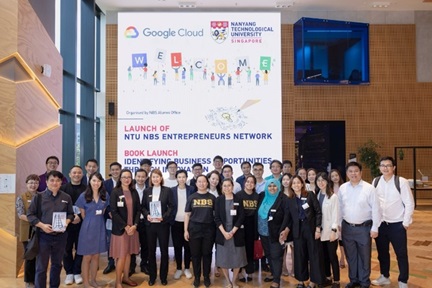Minor Issues: Too tired to be there for your kids? Consider 'retire now, work later'
Are you too tired to parent? Do you sometimes feel anxious, frustrated and confused at having to juggle work and family? Are you trapped in the rat race of making a living and providing for the family?
The term "rat race" aptly evokes the metaphor of people behaving like rats in a cage, running pointlessly in the cage's spinning wheel. Much energy is expended, with little achieved.
A parent can fall into an infinite loop of tasks: work, homework, cleaning, putting food on the table, repeat. This leaves little energy to nurture the children and build relationships within the family.
What does the grind serve? The hope is that after several decades of toil, the kids will grow up and be well educated, and there is a healthy and financially secure retirement that awaits. This describes the well-worn script of "work now, retire later" (WNRL) approach to raising a family.
Unfortunately, WNRL has become a quaint but flawed ideal. With increasing tectonic shifts in the workplace like offshoring, business process streamlining and technology disruption, job security is becoming an ephemeral dream.
This has led to an increase in retrenchments and unemployment among professionals, managers and engineers (PMEs).
The National Trades Union Congress has found that PMEs, particularly those with school-going children, are worried about their job security and have "a lot of anxieties and fears".
The situation has become so dire that it has called for more financial support for people in this group when they lose jobs, in view of their heavier financial commitments as they go through involuntary transitions.
With increasing instability and insecurity associated with employment, the days of WNRL seem numbered.
So, what can be done? Instead of the outdated WNRL dogma, is it time for the "retire now, work later" (RNWL) approach instead?
Besides reordering the letters of WNRL, RNWL contemplates taking active breaks from employment to take care of children, parents or matters of importance, with a clear intent of returning to the workforce when the mission is complete.
"Retiring" from the rat race allows you to take stock, so that upon returning to the workforce, you can be more purposeful about what you want and where you are heading.
More fundamentally, for RNWL to work, you must give up the passive employee mindset associated with WNRL.
To elaborate, a passive employee mindset has the worker depending on the employer for assignments and advancement. As people have seen, this type of conventional thinking results in workers' livelihoods becoming fragile and insecure in the face of disruption.
Instead, the focus during the retirement phase in RNWL is to actively increase employability.
Individuals who are doing RNWL need to be actively engaged in increasing their competitiveness in the marketplace. They invest the time to acquire in-demand skills, actively network within their profession and on social media, and diligently touch base with recruiters who can connect them with future opportunities.
"One of the biggest misconceptions about early retirement is that you can never take a job again or you can never do anything for money again," said Mr Steve Adcock, who used to work in information technology and was featured on news site CNBC for retiring at 35.
His advice for people retiring early is to stay engaged with recruiters, take on consulting gigs, volunteer in professional organisations and expand their networks.
In a nutshell, the mindset of RNWL is to continue to hustle professionally while taking time off to nurture your children. For some, doing RNWL and taking care of the kids could still amount to as much work as being in the workforce.
You ultimately decide how long the pause from the workforce will be. There are parents who take just a few months off work to prepare their child for a milestone examination. For others, it could be taking a few years off to journey with their teenagers through the difficult years of adolescence.
The path of RNWL is not an easy one. For it to work, you must do your sums and accumulate enough savings that will allow the family to sustain its expenses for a period. The planning should accommodate more than just living expenses and include other costs like housing loan payments and other similar expenses. There should be a sum set aside for contingencies.
The savings level will indicate when it is time to return to work from RNWL.
While living frugally can help extend the runway, with no steady income, any nest egg will eventually run low. If there is a job to return to because you had taken an extended leave of absence, that is great.
If not, you should give yourself ample time to secure a new role aligned with your purpose and future career ambitions.
It is worth noting that RNWL is a family choice independent of the working status of the other parent. Single parents who cannot rely on another partner can also do RNWL, if it makes sense. It is, however, important to manage the expectations of the family, especially when small luxuries like dining out might become more infrequent.
I took the path of RNWL 10 years ago. I had returned to Singapore after several years of extreme commuting, with my family based in Singapore and my job based in the United States.
At the time, I was suffering symptoms of burnout from constantly changing time zones between Asia and the US every two weeks, and juggling work with family.
I had saved enough to allow me to sustain the living expenses of the family for several years, even if my wife chose not to work. My plan was to stay home to take care of the kids (my elder son R was nine at the time and younger son S was just six) and repair the relationship with my wife that had frayed due to the stress of extreme commuting.
Stepping back from being the Asia-Pacific president of a brand-name medical device company was not easy. At the time, I did not know if I would ever get a similarly good job in the medical devices industry again.
When I made my RNWL decision, I actively engaged my network to inform people of my "retirement". At a regular catch-up with a long-time mentor, he said he needed my help in a real estate start-up, even though I had no real estate experience.
He said: "You are too young to fully retire. If you don't stay active, you will end up having an affair."
To stay engaged with the medical devices industry, I continued advising several local start-ups working on such devices and teaching MBA students about the healthcare industry at a local university.
Through another industry contact, I was fortunate to land an assignment as a part-time adviser to the chief executive of a New York Stock Exchange-listed medical device company that was looking to strengthen its international business and innovation capability.
R is now 19 and S 16. While I treasure the 2½ years when I was able to step back and be with them, I am glad I had maintained my employability during the "retirement" phase. It allowed me to stay engaged in an industry I am passionate about, until I returned to medical devices in 2014.
RNWL is not for everyone. But for some, it might work and could be a better option than the prevailing WNRL approach that most people default to unthinkingly.
Source: The Straits Times














/enri-thumbnails/careeropportunities1f0caf1c-a12d-479c-be7c-3c04e085c617.tmb-mega-menu.jpg?Culture=en&sfvrsn=d7261e3b_1)

/cradle-thumbnails/research-capabilities1516d0ba63aa44f0b4ee77a8c05263b2.tmb-mega-menu.jpg?Culture=en&sfvrsn=1bc94f8_1)

7e6fdc03-9018-4d08-9a98-8a21acbc37ba.tmb-mega-menu.jpg?Culture=en&sfvrsn=7deaf618_1)




